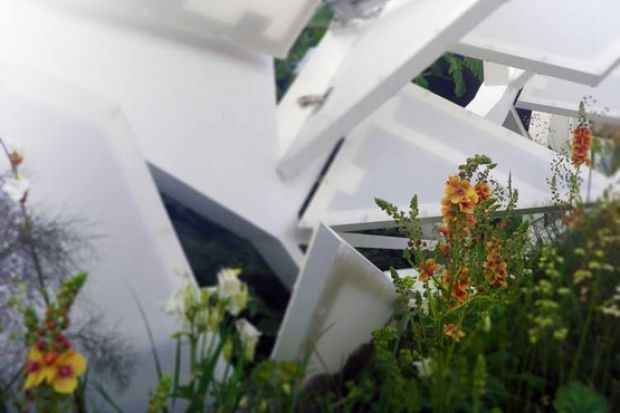I was recently part of an unlikely ensemble of computer programmers, psychologists, electrical engineers, architects and - bear with me - garden designers, which returned from the RHS Chelsea Flower Show with a gold medal.
Entering a garden into the world’s most famous horticultural show may seem a frivolous excursion from the real business of academia, but the story of how our ‘Digital Capabilities’ garden came into being has taught me a great deal about the joys and the dramas of truly cross-disciplinary research.
It started with one of those innocent “What if…” conversations we have all the time. What made this conversation different is that it was followed by realisation that the idea might just work. Then came the real business of research collaboration: the challenge of having to deliver something tangible by a fixed date, no matter what.
For a long time now I have wanted to do a technology-based show garden at Chelsea.
I don’t fully understand why- it’s just always held a tantalising appeal to me - but I have been inspired in part by the more provocative show gardens over the years, in particular the almost Ballardian mix of plants and industrial materials used by Diarmuid Gavin.
The designer’s creations always seemed to make a provocative statement, and I liked the idea that he seemed to do these gardens for no other purpose but to upset the old order.
So, when last year’s show included a homage to the (rightly) maligned ‘QR code’, I resolved to finally do it properly.
I teamed up with Harriet Gross, head of psychology at the University of Lincoln, who also has a research interest in the psychological impact of gardens and gardening.
We began by looking for a garden design practice which would be sympathetic to our aims but which also knew what it takes to make a show garden somewhere like Chelsea.
Tom and Paul Harfleet, who we chose to work with, had an intriguing track record of show garden design, guerrilla gardening and social media savvy.
We also formed a team of fellow academics, technicians and students led by Richard Wright from Lincoln’s School of Architecture, Chris Waltham from its image engineering lab, and Duncan Rowland who works with me in computer science.
Our proposal for a ‘digital show garden’ was duly granted a plot at Chelsea, and we named our garden Digital Capabilities, a nod to the great Capability Brown.
The primary aim was to reveal, in a thought-provoking manner, hidden conversations on social media to people who might not normally engage with such technology.
Chelsea provided the perfect setting for our experiment: a place with a vast audience, but hardly a hotbed of digital innovation.
The garden was segmented into two halves: an outer-space filled with familiar British planting and inner-space filled with exotic, unfamiliar and unusual planting.
Separating the two spaces was a tessellated wall comprising 20 motor-actuated panels which were controlled by a single Raspberry Pi (RPi) computer.
The RPi continuously communicated with Twitter to determine the volume of tweets around any given topic (such as mentions of the show using the hashtag #rhschelsea) and opened or closed the wall’s panels to reveal, or conceal, elements of the inner-garden.
As such, the garden’s behaviour was directed, democratically, by its audience on Twitter.
The five days of the show were terrific fun: both exhilarating and exhausting.
At one point the garden’s Twitter account gained so much interest that it broke down and the account was temporarily suspended.
Of course I returned to Lincoln to a packed inbox and a backlog of work.
And we are still in the process or analysing data from Twitter, the media and our project website to build a complete picture of just how much of a stir we created.
So how do I explain the value of that week at Chelsea, and the many months of hard work, laughter and anxiety which preceded it?
For a short while, our garden made thousands of people look afresh at an aspect of our society and their place in it.
To me, as a researcher trying to understand how society intersects with the new technologies of our age, that’s worth more than the gold medal.
Register to continue
Why register?
- Registration is free and only takes a moment
- Once registered, you can read 3 articles a month
- Sign up for our newsletter
Subscribe
Or subscribe for unlimited access to:
- Unlimited access to news, views, insights & reviews
- Digital editions
- Digital access to THE’s university and college rankings analysis
Already registered or a current subscriber? Login
